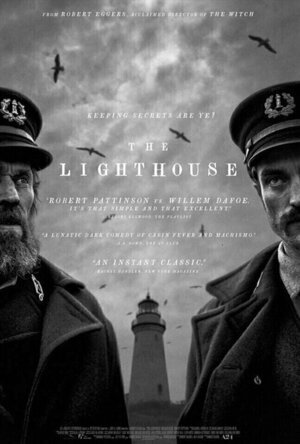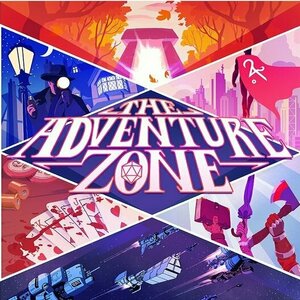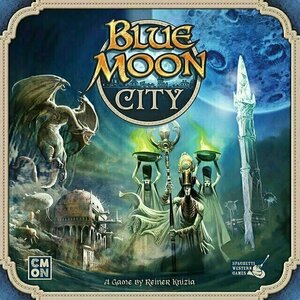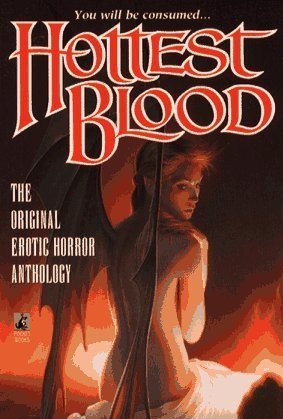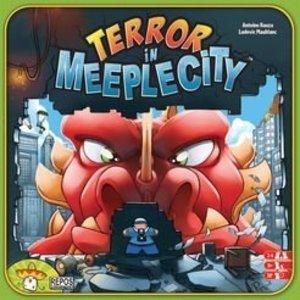
Sasol eBirds of Southern Africa
Reference and Book
App
"In southern Africa the Sasol eBirds would undoubtedly be my first choice. The text is detailed, the...

Read4Kids - Kids learn to read in 20 easy lessons
Education and Book
App
Read is a 20-lesson program designed to help kindergarten and elementary school age children (4–8...
Gareth von Kallenbach (980 KP) rated The Lighthouse (2019) in Movies
Oct 24, 2019
The Lighthouse features Willem Dafoe as Thomas Wake, a grizzled old lighthouse keeper who begins his four-week duty on a secluded lighthouse with Ephraim Winslow (Robert Pattinson), a man who has never worked a lighthouse in his young life. Thomas a former seaman who longs for his time back on the waves directs Ephraim around in his duties as one would expect from an experienced sea captain, teaching Ephraim the way of a lighthouse keeper. One rule that Ephraim must obey is that no one manages the light except Thomas, and no one may look upon its glory except Thomas. Reluctant to obey but not wishing to lose his pay Ephraim obliges and the two spend four weeks managing their duties as best as they can.
It’s after the four weeks, when their relief fails to arrive, that things begin to go off the rails. It is here where the secrets begin to emerge, and the audience is left to wonder whether these two will ever make it off the island. It’s here where the film begins to intensify as the struggle for survival with dwindling supplies, and the effects of loneliness and solitude begin to rear its ugly head. Where each mans sanity will be tested and the bond, they have built over the past four weeks will be put to the test.
The Lighthouse is a movie that is difficult to put into any one genre. Much of the movie plays out like a drama, where the old man and the newcomer work to overcome their differences as one mentors the other. The movie always has an underlying sense of dread, wondering what will come next. As the film progresses, the genre changes, and the suspense and horror begin to develop. What was a job where each man understood their roles becomes a race for survival. The questions begin to mount as we see the characters relationship morph and change. Why did Ephraim choose a life of solitude so far from civilization?
Why doesn’t Thomas allow anyone to man the light but him? What is each men hiding from one another?
William Dafoe does another outstanding job as the gruff, old lighthouse keeper. His accent, mannerisms and evening toasts all are performed with such authenticity that it’s hard to distinguish the actor from the character.
The real surprise was the performance of Robert Pattinson who is best known for his previous works on the Twilight series. He brings so much character to the screen that I would have had a hard time recognizing him if I didn’t know he was in the movie. He delivers a performance that is likely to garner Oscar buzz, something that wouldn’t surprise fans of William Dafoe, but might shock fans of Robert Pattinson. Robert Pattinson in this role is by far the best performance he’s ever done in his career and all, including his most devoted fans, will be pleasantly surprised by his performance in this film.
As I discussed in the opening paragraph, some films and shows play best to the medium that they are recorded on. Much like the old Alfred Hitchcock movies/shows, The Lighthouse benefits from its use of black and white and its boxy presentation. While there is certainly plenty of dialog throughout, it still takes on a very “silent movie” feel. One that you could almost expect to see placards of dialog appear instead of the actual words coming out on the screen. It is this stunning use of the above that truly brings The Lighthouse alive, and if done in color would have lost much of its personality in the process.
There is a ton of imagery and symbolism which I’m sure will be argued about on numerous Reddit posts for the next few days and weeks to come. I won’t pretend to understand much of it, and I believe that Eggers leaves many of what we see open for interpretation. Everything from the lighthouse itself, to the seagulls, to the mermaids (yes you read that correctly) all are open for discussion. After watching it I couldn’t help but wonder what the discussion of this particular film would have led to in my theater appreciation course back in college. That’s not to say that you can’t simply sit back and enjoy it for what it is, I just think its far more beneficial to think of what was seen and try to understand the meaning of it all.
The Lighthouse isn’t a movie that will appeal to everyone. For those who want a scary and suspenseful movie, it would be difficult to recommend.
While it certainly has suspense, it suspenseful in the way of an old Twilight Zone or Alfred Hitchcock movie, as opposed to something more recent like Paranormal Activity. The black and white video and the odd boxy aspect ratio may turn off a lot of folks as well, although I certainly don’t see it being as fascinating if it was done in any other way. There is a lot to love in this movie, and the character portrayals deserve the Oscar buzz that is certainly right around the corner. It’s a movie that is far easier to experience then to explain in a review, so I encourage those with even a little bit of curiosity to take the plunge and experience it for yourself.
kelsey (8 KP) rated The Adventure Zone in Podcasts
May 29, 2019
Balance has since ended, and now the podcast has moved on to other TTRPGs like Fate (TAZ: Commitment), Powered By the Apocalypse (TAZ: Dust), and Monster of the Week (TAZ: Amnesty). Commitment and Dust are two short-run "test-drives" run by Clint and Travis respectively, and I personally adored a departure from the 5e system to not only be introduced to different TTRPGs, but to hear the DM-ing (or now GM-ing) styles of the other McElroys. In Amnesty, Griffin once again takes the reigns to run the game, and at the posting of this review, Amnesty is being considered the "second season" for TAZ. For some, these diversions from the 5e system may not work, but I recommend listening. They're just as creative and fun as Balance was, though different. I recommend coming in with an open mind, as going from the way Balance was to now, the show is quite different, but the heart is still there and the stories are still stunning.
If those aren't your speed, though, the McElroys post bonus games (like Four Sherlock Holmes) that are meant to be silly one-shot arcs AND they host a number of live-shows that bring back the beloved Balance characters into hilarious one-shot adventures, so you're never short of a dose of Magnus, Taako, and Merle. Being honest, the live shows are some of the funniest things I've listened to. They're marvelously fun, and the added time pressure of the show adds to the comedy. They also really bring back the actual-play atmosphere that sometimes gets lost during edited episodes.
I cannot recommend TAZ enough. Being honest, it pretty much saved my life. It brought (and still brings) me so much joy, and it encouraged me to try out TTRPGs--seriously, I took up DMing because of TAZ, and now I run TTRPG games weekly.
Do yourself a favor, roll perception with advantage and give this one a listen.

Video & TV Cast Pro for LG Smart TV: Stream Movies
Photo & Video and Entertainment
App
Watch any web-video, online movie, livestream or live tv show on your LG Smart TV or Blu-ray Player....

Fast Web Browser Free - New automatic full screen firefox chrome like themes edition
Productivity and Utilities
App
Easy! Clean! Fast! Full Screen Tabbed Web Browser - Maximize your browsing experience. Features: ...
Purple Phoenix Games (2266 KP) rated Blue Moon City in Tabletop Games
Aug 27, 2021
Blue Moon City is a fantasy-set, hand management, set collection, city rebuilding game for two to four players. In it players are attempting to help reconstruct the war-ravaged Blue Moon City to its former glory by utilizing its citizens at crucial construction sites in order to earn crystals. It sounds weird, and it is, but read further to understand why. Oh and there are dragons that act like supervisors or teachers when they come stand by you to watch you take a test and judge you from behind the whole time.
To setup, place the Courtyard tile in the middle of the table and build the city in a 5×5 grid minus the corner tiles. Each player chooses their color and takes the mini and discs of that color. Place the dragons nearby, along with the Obelisk token, draw deck of cards, crystal chits, and dragon scale chits. Deal each player a hand of eight cards and the game may begin!
Blue Moon City is played over a series of turns, and each turn is divided into four phases: Movement, Contribution, Reset, Pass Turn. During the optional Movement phase, a player may move their pawn one to two orthagonal spaces (N/E/S/W) or use cards from their hand for their special movement powers for player pawn AND/OR dragon movement.
Next, a player may discard cards from their hand to contribute to the reconstruction of a building during this optional Contribution phase. By discarding a number of cards whose values equal or exceed the printed value on the matching-colored building tile a player will be able to place a disc upon the tile. Once the tile’s contribution spaces have been filled with discs it can be scored. To score a building tile, determine majority presence on the tile and award the Majority Bonus to that player. Any disc presence in minority will receive the Construction Bonus, including the majority winner. If a player had contributed on a tile that also was hosting a dragon mini, that player would earn a dragon scale from said dragon supervisor. Players may also make their way back to the Courtyard tile in order to donate crystals to the Obelisk. Doing so will allow the player to place one of their discs on the Obelisk itself, and the game ends when a player has placed the proper number of discs upon the Obelisk per the number of players.
When the pile of dragon scale tokens has been exhausted, players will check who currently holds the majority of scales. They will be awarded with six crystals, and any player holding three or more will receive three crystals. Turn all the dragon scales back into the supply to be earned again.
During the Reset phase a player may discard any number of cards from their hand and draw back as many cards plus two. So if a player discards zero cards from hand they would still draw two from the deck. Discarded four cards? Well redraw six.
Finally the active player will Pass Turn to the player on their left, who will complete their turn of the same four phases.
Play continues in this fashion until one player has placed the target number of discs on the Obelisk token to claim victory and dragon approval!
Components. Okay, this is a tough one because overall I love the components in the game. The dragons and player pawns are cool minis (from CMON that just makes sense). The Obelisk token is huge and I love how it looks. The art overall is really creepy, but well done, and enjoyable to behold. The player discs, though poo-pooed by other more-renowned reviewers, I find to be just fine. They are a smooth plastic in the player color and I have no problems with their quality. But speaking of colors… I agree with others that have stated the colors of some cards (or suits, if you prefer) should have been made a different color. What I mean is that the game is very greige-heavy throughout. The card suits (except the red, yellow, and blue) are a variation of the same greige that makes eyes strain to determine exactly which color they are holding. I understand that a certain aesthetic was targeted, and they certainly achieved that, but these colors do make it more difficult to play, especially for us that are starting to over-ripen with age.
Those component gripes aside, this is an incredible game. The color choices aside, I love everything about it! The movement from tile to tile, and trying to align movement with the cards in hand and keeping some back so that you can use them to move the dragon to your spot as well is just fun mental exercise. Each value 1 and 2 card has a special ability, be it movement bonuses, changing other cards’ colors, or just being straight up wild cards, and having to choose to use the cards as either the special power or for contribution values creates tons of crunchy gamer choices. Not super-crunchy. Turns won’t be mentally debated for 10 minutes, but deciding how best to use the hand of cards you hold is great.
I also very much enjoy the theme of the game, even though I was hoodwinked by the title (not really, just trying to tie it all back). I love fantasy worlds and having a unique theme is a definite plus for me. I haven’t yet thrown in the expansion tiles, but I will the next time I play. If you need a relatively quick-playing jaunt through a ravaged city, I recommend you check out Blue Moon City. Purple Phoenix Games give it a 10 / 12. It has nothing to do with beer, which would be another great theme idea – drunken dragons – but I will be holding onto this one for quite a while.
Mandy and G.D. Burkhead (26 KP) rated Hottest Blood: The Ultimate in Erotic Horror in Books
May 20, 2018
I like short story compilations because you get a variety of content that’s just as easy to breeze through if you have the time as it is to get to a stopping point and put down if you don’t. I like horror fiction because it usually involves the super-natural, which interests me, and intense emotional responses, which are almost always a good thing in writing. And I like eroticism because I am a warm-blooded human being with a pulse. However, on the whole, I do not like Hottest Blood.
I wanted to, I did. Look at that cover. It’s equal amounts scary and sexy, both in completely safe, PG-13-at-most kind of ways. Unfortunately, Softcore Succubus here is both the scariest and the sexiest thing about this book
Bluntly analogized, you know that feeling you get when you come across something on the internet that disturbs and/or disgusts you, and then you learn that there’s a dedicated group of people that gets off on it? Most of the stories in this book are that feeling captured in words.
Case in point, the story “Damaged Goods” by Elizabeth Massie, which as far as I can tell is about a couple of physically abused, emotionally damaged, developmentally stunted kids somewhere around their early teens who live with a religious fringe cult being led out to a field to have sex with each other while a nameless U.S. President watches and masturbates before both kids are drowned in a river by their preacher/pimp caretaker.
Or there’s “Mr. Right” by Chris Lacher, which tells the story of a college student named Russ who has a secret fetish for the deformed women in the freak show at a nearby carnival – a fascination which leads to him getting held down and forcibly raped by a group of unwashed subhuman mutants, which the detailed descriptions make sure you understand are completely revolting to all five senses. The story ends with him being dumped out behind the fairgrounds while a small, legless girl happily informs him that this is how all carnival workers reproduce, and he can look forward to seeing his own mutant rape-spawn in the show next year.
Or there’s “Abuse” by Matthew Costello, which simply shows us how the arrest of a Peewee Herman surrogate goes down in an adult movie theater before ending with another man jerking off with the cold, dry, severed hand in his pocket as he contemplates getting a new one to replace it.
The tone of these three are pretty much par for the course for the rest of the book: thoroughly disturbing, and sex is involved, but the disturbing feeling stems from revulsion rather than fear, and the sex bits are so far on the other end of the spectrum from erotic that it feels like the authors are trying to punish their readers for even expecting to be aroused in any way.
Of course, I said myself earlier that intense emotional responses are “almost always a good thing in writing.” By that merit alone, this book technically succeeds; in fact, if it had billed itself as shock fiction instead of erotic horror, I’d begrudgingly give it a medal in its class. The “aw, what the hell?!” moments are not as artistically executed as, say, a Chuck Palahniuk read, and they tend not to have as much depth to them, but strictly in terms of making you wish that you could unread words, they get the job done.
But that isn’t the job that Hottest Blood was hired to do, and that’s not what it put on its resume. It said it was going to “heat the blood and chill the mind,” and promised that “terror never felt this sexy!” It would have been more appropriate to say that “sex never felt this terrible.”
All of that said, if you abandon any hope of seeing anything resembling erotica or horror (scary horror, anyway), there are a few stories in here that are decent reads – mostly because they try to say something with their subject matter rather than use it to see how thoroughly they can ruin the idea of sex for the reader. To give a few quick nods of approval:
Nancy Holder’s “I Hear the Mermaids Singing,” which opens the anthology, is a dark and modern re-imagining of “The Little Mermaid” that brutally points up the drawbacks to throwing away your whole life and family in order to pursue someone that you know nothing about outside of a few fleeting glimpses and lustful inner fantasies.
J.L. Comeau’s “Black Cars” is the narrative of a high-class chauffeur as he tells his passenger an increasingly mysterious story about a couple of his regular customers, culminating in a creepy twist payoff that, in retrospect, actually makes it count as a legitimate horror story, and a decently gripping one at that.
And “Safe at Home” by Steve and Melanie Tem, while decidedly and disturbingly unsexy, at least has good reason to be; it’s a short character study of a young woman who’d been molested as a child, and the lasting and complex psychological damage resulting thereof that prevents her from having any normal social life or relationships, even with someone whom she legitimately likes, someone who knows what’s happened and sincerely cares for her.
So for the handful of intriguing stories that don’t make you quit (or wish you had) mid-read out of revolted disappointment, I can’t completely condemn Hottest Blood. If you want to test your own threshold for repulsion but are understandably hesitant to use online image searches to this end, I heartily recommend it.
If you are legitimately turned on by the idea of a man eating a woman alive and then gestating her alien spawn inside his own bloated body until his head detaches and crawls away (“How Deep the Taste of Love,” John Shirley), I suppose I still heartily recommend it, though I do so from a safe distance.
If you want to read one of the few stories involved that aren’t horrible, I heartily recommend trying to find them on their own somewhere else first.
But if you want “the ultimate in erotic horror,” stay the hell away. Softcore Succubus is a trap.
Purple Phoenix Games (2266 KP) rated Terror in Meeple City in Tabletop Games
Aug 6, 2019 (Updated Sep 23, 2021)
Terror in Meeple City is a dexterity game of area movement and set collection in which players are trying to amass the most end-game Victory Points by devouring meeples, collecting building tiles, teeth, and by successfully completing their Character cards. To begin, setup the board as described in the rulebook, constructing buildings and placing meeples and vehicles accordingly. Each player receives a screen, Body (monster), and Paws (disc) in their chosen color, placing the Paws on the starting area closest to them. Players receive 4 Teeth tokens and are dealt a Character card, Power card, and Secret Superpower card. The Character and Power cards are visible to all players, and are permanent throughout the game – providing special abilities or scoring conditions for the end of the game. The Secret Superpower card is secret (duh) and revealed only when you are ready to use it – it is a one-time use in the game, and then discarded. Select a starting player, and the game is ready to begin!
On your turn, you will perform 2 of the following actions: Move, Demolish, Toss a Vehicle, or Breathe. You can perform the same action twice on your turn if you want! To Move, you will first take the Body of your monster off of the Paws disc. Using your finger, you will flick the Paws disc on the board, hopefully to end up where you wanted it! After a successful flick, put your Body back on the Paws. To Demolish, your Paws must be touching the sidewalk surrounding one of the buildings in the city. If that is the case, you can try to demolish that building – by picking up your Body, holding it over the appropriate building, and dropping it! In order to Toss a Vehicle, your monster must be located in the same neighborhood (area of the board) as a vehicle. Pick up the chosen vehicle, place it on top of your monster, and flick it! And finally, you can Breathe – place your chin on top of your monster, inhale, and then blow as hard as you can. While performing these actions, there may be some collateral damage, that could be beneficial or detrimental to you! If you knock down another monster on your turn, collect one of their Teeth and put it behind your screen. If after your action, there is a building tile with nothing on it (meeples, monsters, etc.) then you collect that tile behind your screen as well.
Once you have taken your 2 actions, it is time to Chow Down – eat as many accessible meeples in your same neighborhood as you have Teeth tokens left. Devoured meeples go into your stomach (behind the player screen). If at any point during your turn, any meeples end up fleeing the city (knocked off the board), they will be added, in order, to the Runaway Meeple board. Once a line on this board is filled, the active player suffers the negative consequence – so be careful not to scare off too many yummy meeple morsels! The game continues in this fashion until it ends in one of two ways. Either the last building tile is collected, everyone takes one last turn, and then VP are tallied. Or the final line of the Runaway Meeple board is filled, causing the player who filled it to lose, while everyone else counts up their VP. VP are earned for any Teeth collected, building tiles consumed, sets of meeples devoured, and any points earned from your Character card. The player with the most VP is the winner and is the greatest monster of the game!
So I know that sounds kind of chaotic – and at times it can be. But it is a light-hearted and silly game that engages all involved. The simplicity of the mechanics (flicking/blowing) are countered by the strategy required for success. Yes, by all means, go on a crazy rampage – but the goal is end-game VP, so how can you use all these moving components to your advantage? The strategy is there, with enough luck/randomness from a dexterity stand-point that it keeps the gameplay interesting. And it is just plain fun to play! Getting up to move around the board for a better angle, knocking over opponents accidentally (or on purpose!), and sending components flying across the board makes for an entertaining and engaging game. That being said, unless you are incredibly dextrous and can perfectly execute your desired actions, be prepared for some frustration when you whiff big on a flick.
Let’s talk components for a minute. They are pretty good in this game! The board and cardboard building tiles are all pretty sturdy, which is really necessary in a game where the components can take quite a beating. The wooden meeples and monster parts are thick and high quality as well! I take great pride in keeping my games in good condition, and even this one has withstood the test of time and plays. So, good production quality all around, if you ask me!
Is Terror in Meeple City my favorite game? No. But it’s one that I’m glad to have in my collection. It works well in so many situations – a gateway game, a light-hearted filler game, a game to get everyone up and moving, and a game that can be played with younger gamers as well. Although it’s not really a brain-burner or a game of high-level strategy, it’s one that still makes for a good time. Purple Phoenix Games gives it a 7 / 12. Give it a try if you’re itching to smash some stuff!
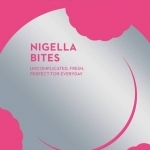
Nigella Bites (Nigella Collection)
Book
Nigella Collection: a vibrant new look for Nigella's classic cookery books. 'Cooking isn't...
